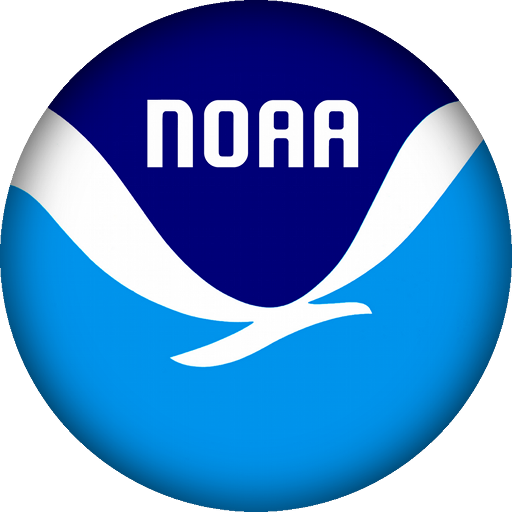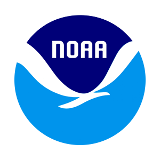| Home | | | Schedule | | | Local Info |
| ERDDAP: Introduction and Use |
| Session Time | January 9th; 10:30 am to 12:00 pm | |||
| Location | White Flint | |||
| Description | The session will revolve around the software tool known as ERDDAP. The first half of the session will include:
presentations for introducing ERDDAP and what it offers data providers; examples of how ERDDAP is being used in
the scientific community; tools for installing and using ERDDAP.
The second half of the session would be focused on hands-on configuration of datasets into ERDDAP. Ideally, we would take advantage of data providers who were interested in using ERDDAP, but were struggling to properly configure their datasets. This session would address those issues, as well as offer insights and tips from the ERDDAP developer on how to better configure and run an ERDDAP server. At the end of the session, we hope that there would be a much clearer understanding of the value that ERDDAP provides data producers, as well as having assisted attendees in actually configuring their specific data into an ERDDAP server. |
|||
| Chair | Kevin O'Brien | |||
| Presentations and Notes | Click Here! | |||
| Talk | Length (min) | Title | Presenter |
| 2C.1 | 15 | An Introduction to ERDDAP | Bob Simons |
| 2C.2 | 30 | Hands-on with ERDDAP: Generating dataset configurations | Bob Simons |
| 2C.3 | 15 | Deploying and Managing ERDDAP servers | Kyle Wilcox |
| 2C.4 | 15 | Using Erddap as a building block in Ireland’s Integrated Digital Ocean | Adam Leadbetter |
| 2C.5 | 15 | ERDDAP and the International Ocean Community | Kevin O'Brien |
| Abstracts | |||
| 2C.1 | An Introduction to ERDDAP
Bob Simons (NMFS/SWFSC ERD) |
||
| ERDDAP is a free, open source, data server that gives users a simple, consistent way to download subsets of gridded and tabular scientific datasets in common file formats and make graphs and maps. ERDDAP has been installed at over 50 organizations around the world. NOAA's Data Access Procedural Directive includes ERDDAP in its list of recommended data servers for use by groups within NOAA. This talk will offer a quick introduction to ERDDAP and describe some features that have recently been added to ERDDAP. | |||
| 2C.2 | Hands-on with ERDDAP: Generating dataset configurations
Bob Simons (NMFS/NOAA/NMFS/SWFC) Kevin O'Brien, UW/JISAO and NOAA/PMEL |
||
| This hands-on session will focus on demonstrating how to configure datasets into an ERDDAP server. This will include tips and tricks on how to best configure data, as well as tools to help create data configurations. | |||
| 2C.3 | Deploying and Managing ERDDAP servers
Kyle Wilcox (Axiom Data Science/NOAA/IOOS) |
||
| This technical talk will focus on automation techniques for easing deployment and management of ERDDAP servers - pulled from the experiences of managing a deploying dozens of ERDDAP instances in the past. We will highlight a few modern software principal improvements we have made to ERDDAP, techniques for streamlining the deployment of ERDDAP into a production environment, python tools for managing ERDDAP's content files, and explain the different ways a data manger can reload datasets without ever restarting the ERDDAP instance. | |||
| 2C.4 | Using Erddap as a building block in Ireland’s Integrated Digital Ocean
Adam Leadbetter (Marine Institute, Ireland/Integrated Digital Ocean) Eoin O'Grady (Marine Institute) |
||
| The Marine Institute is Ireland’s national agency with responsibility for marine research, technology development and
innovation in Ireland. The Institute provides scientific and technical advice to the Irish Government to help inform policy
and to support the sustainable development of Ireland’s marine resource. Under this remit, and recognising that the
Marine Institute is only one of many organisations collecting data in Ireland’s marine region, the Institute has over the
last two years developed and promoted the concept of Ireland’s Integrated Digital Ocean. This activity has included the
development of a data portal, one of the building blocks of which is NOAA’s Erddap software.
The Integrated Digital Ocean programme promotes the publication of marine data through openly accessible web services, which can be combined into applications for various end user groups. The demonstrator portal currently presents data published online by fifteen organisations in a single website. The portal delivers real-time (order of one second delay), near-real time (order ten minutes delay) and static (Geographical Information Systems type) data. A map interface allows users to drill down to a selected location where either an overview view of a bay scale region or an individual point where Erddap is used to deliver a summary of the latest results to either cards or a map pin. From the overview, users may drill down further to a graph viewer where both observed and modelled results delivered from Erddap are combined into web graphics using the HighCharts.js library. Finally, users may navigate to a data download area where again the backend is powered by Erddap. In this architecture Erddap is being used as a brokering layer to multiple data sources which include a Cassandra database which is storing data in real-time from a subsea observatory; netCDF files as provided by the global Argo drifting float programme; a THREDDS server delivering modelled data; and a traditional SQL relational database storing other observational data. The Erddap data outputs and graphs have been combined in some of the dashboard graphs with MQTT protocol outputs to update the graphs in real-time. Further developments in progress for the Integrated Digital Ocean platform include: incorporation of remotely sensed and modelled data on the main map interface; incorporation of research vessel data outputs; and development of a standardised API for discovery and access to the Digital Ocean data. |
|||
| 2C.5 | ERDDAP and the International Ocean Community
Kevin O'Brien (UW/JISAO and NOAA/PMEL/OAR/UAF, OAR/OSMC) Bob Simons (NOAA/NMFS), Kevin Kern (NOAA/NDBC), Bill Smith (NOAA/NDBC), Eugene Burger (NOAA/PMEL) |
||
| Currently in the ocean observing community, there are a wide variety of platforms that provide measurements on a
variety of timescales, both in real time and through delayed mode processes. These distinct data streams also tend to
have disparate methods of managing and serving the data and information. As the ocean community evolves to
support the concepts of Essential Ocean Variables (EOV), or Essential Climate Variables (ECV), it becomes critical to
provide access to integrated collections of well documented observations, which can often originate from different
platform observing networks.
NOAA’s Observing System Monitoring Center (OSMC), in partnership with the Unified Access Framework (UAF) project, is utilizing ERDDAP as the framework to improve integration of data and information across the global ocean observing networks. Several observing networks, such as Argo and Global Drifter Program, are utilizing ERDDAP to serve their delayed mode data. In addition, the OSMC project is utilizing ERDDAP to provide easy access to real time data that is distributed via the Global Telecommunications System (GTS). Often this data is distributed in binary BUFR format, and is difficult for the non-expert to decode and understand. By using ERDDAP to serve the data, even novice users can access near real-time ocean data through an assortment of interoperable services and formats. In this presentation, we will discuss the ongoing efforts to improve integration and interoperability of ocean in situ observations using ERDDAP. |
|||
| Top of the Page |


